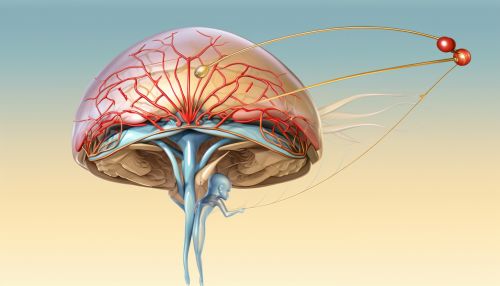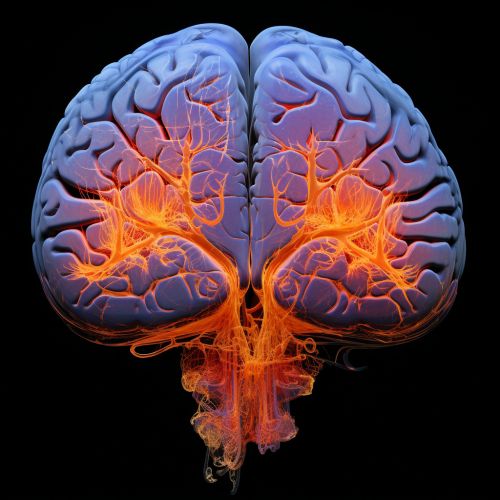Diencephalon
Anatomy
The diencephalon, an integral part of the brain, is nestled between the cerebral hemispheres and the brainstem. It comprises four primary components: the thalamus, the hypothalamus, the epithalamus, and the subthalamus. Each of these components plays a pivotal role in the functioning of the human body.


Thalamus
The thalamus, the largest component of the diencephalon, functions as a relay station for sensory information. It receives inputs from various sensory organs and transmits them to the appropriate areas of the cerebral cortex. Additionally, the thalamus plays a significant role in the regulation of consciousness, sleep, and alertness.
Hypothalamus
Situated beneath the thalamus, the hypothalamus is accountable for a variety of functions related to homeostasis. These include the regulation of body temperature, hunger, thirst, fatigue, sleep, and circadian rhythms. The hypothalamus also governs the pituitary gland, thereby playing a crucial role in the endocrine system.
Epithalamus
The epithalamus, located above the thalamus, primarily consists of the pineal gland. This gland secretes the hormone melatonin, which regulates sleep patterns in both circadian and seasonal cycles.
Subthalamus
The subthalamus, located beneath the thalamus, is involved in the regulation of movements. It is closely associated with the basal ganglia, a group of nuclei that play a key role in motor control.
Function
The diencephalon plays a pivotal role in numerous bodily functions. Its components are involved in sensory perception, motor control, homeostasis, and the regulation of sleep and wakefulness.


Sensory Perception
The thalamus processes and relays sensory information to the cerebral cortex. This includes information from the visual, auditory, and somatosensory systems. Moreover, the thalamus plays a role in the perception of pain.
Motor Control
The subthalamus and the thalamus are involved in the regulation of voluntary movements. They receive inputs from the basal ganglia and the cerebellum and send outputs to the motor areas of the cerebral cortex.
Homeostasis
The hypothalamus serves as the main control center for homeostasis. It regulates body temperature, hunger, thirst, and sleep. Additionally, it controls the pituitary gland, thus playing a key role in the endocrine system.
Sleep and Wakefulness
The diencephalon is involved in the regulation of sleep and wakefulness. The thalamus plays a role in the generation of sleep spindles, which are bursts of brain activity that occur during stage 2 sleep. The hypothalamus controls the sleep-wake cycle through the secretion of various hormones.
Clinical Significance
Dysfunction of the diencephalon can lead to a variety of neurological and psychiatric disorders. These include insomnia, hypersomnia, eating disorders, and mood disorders.


